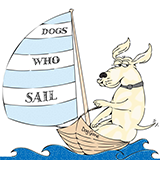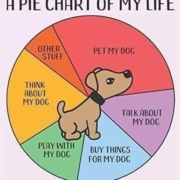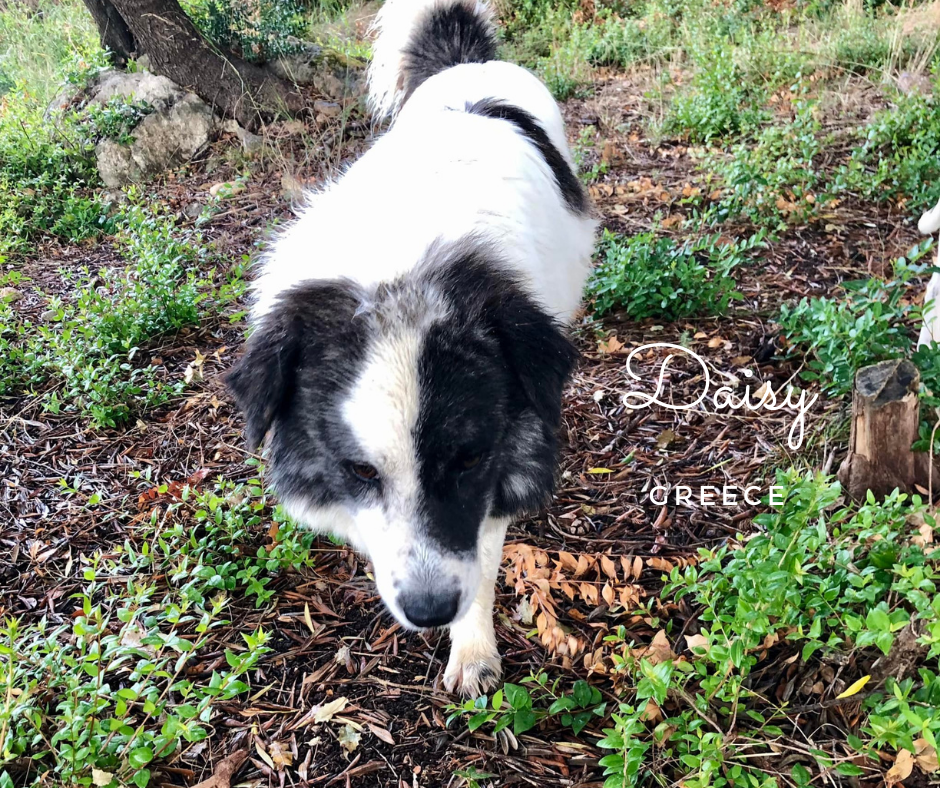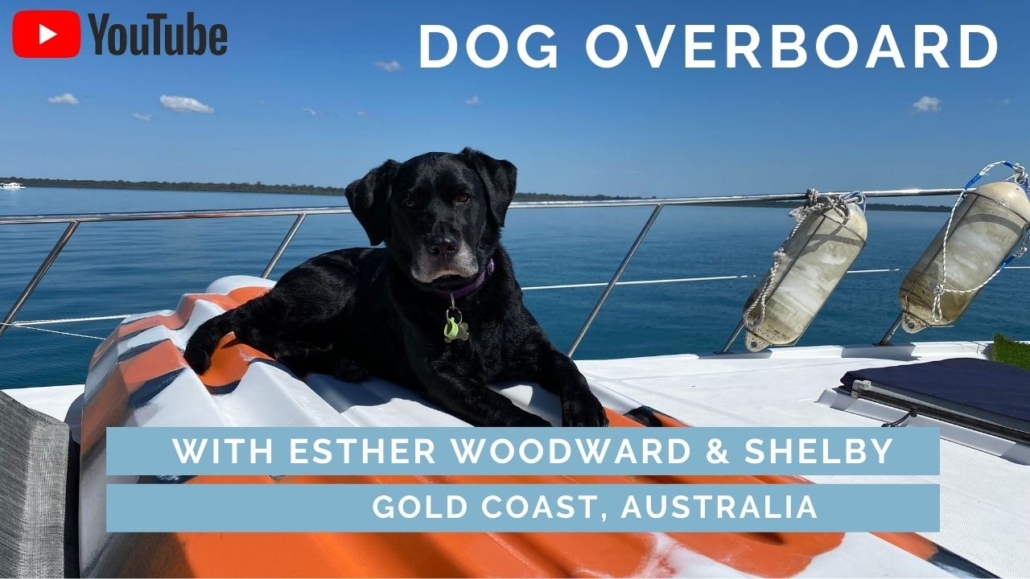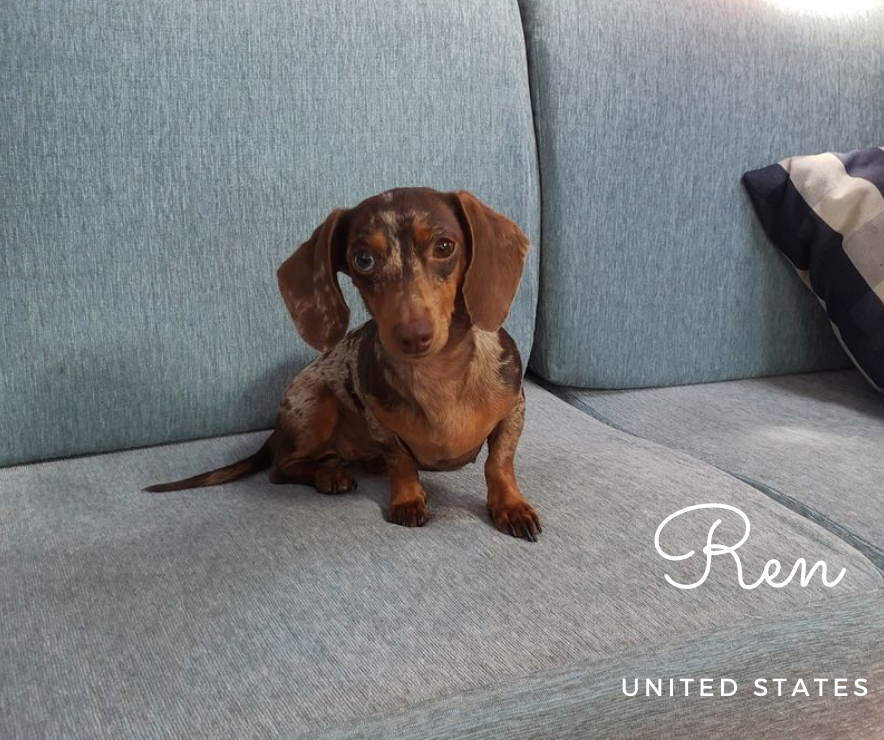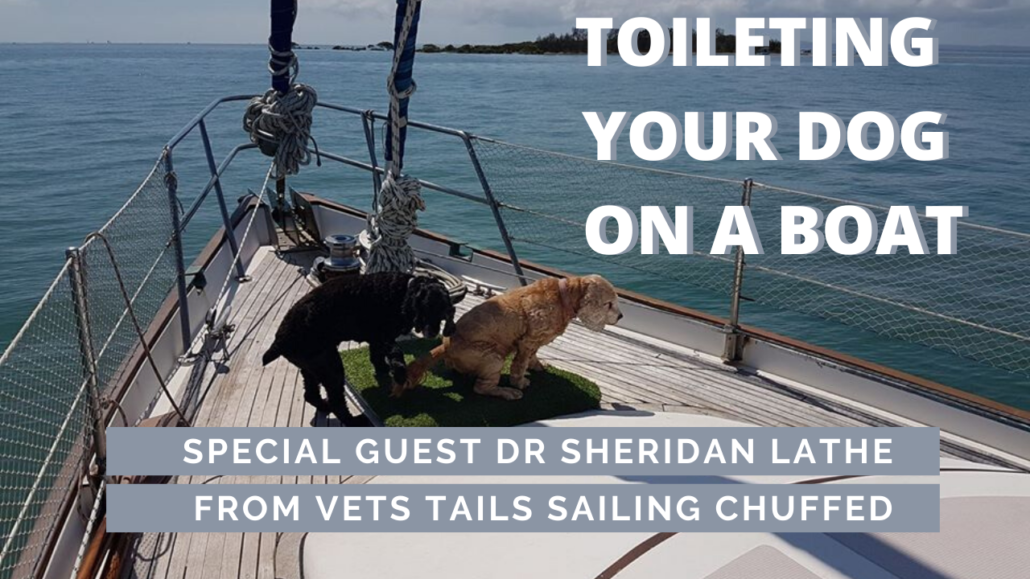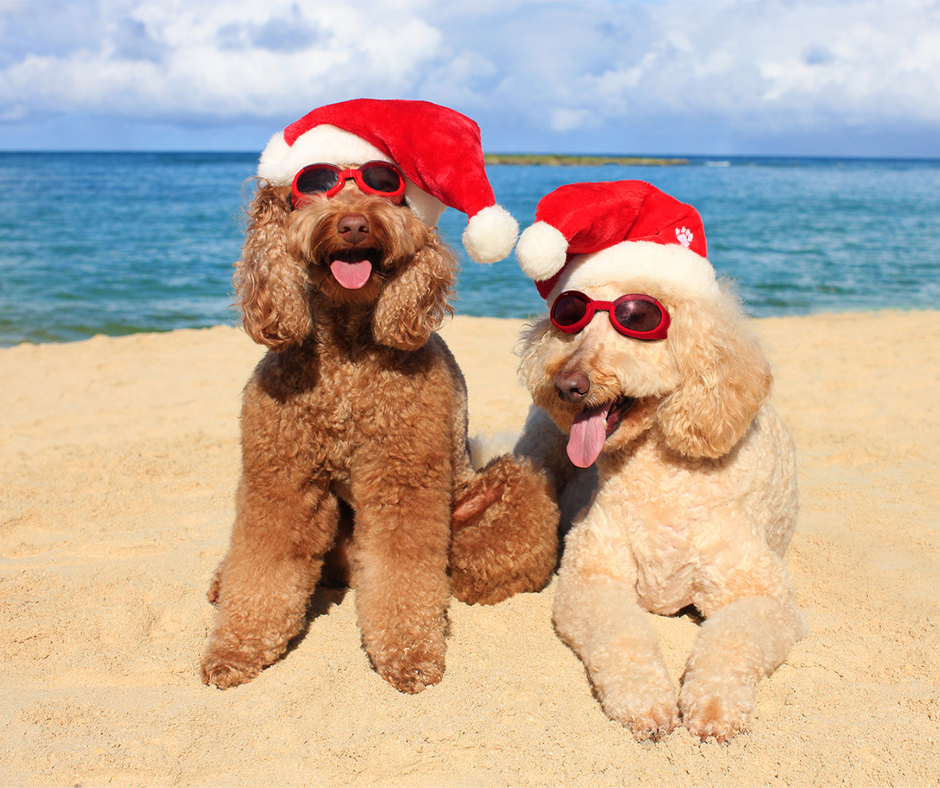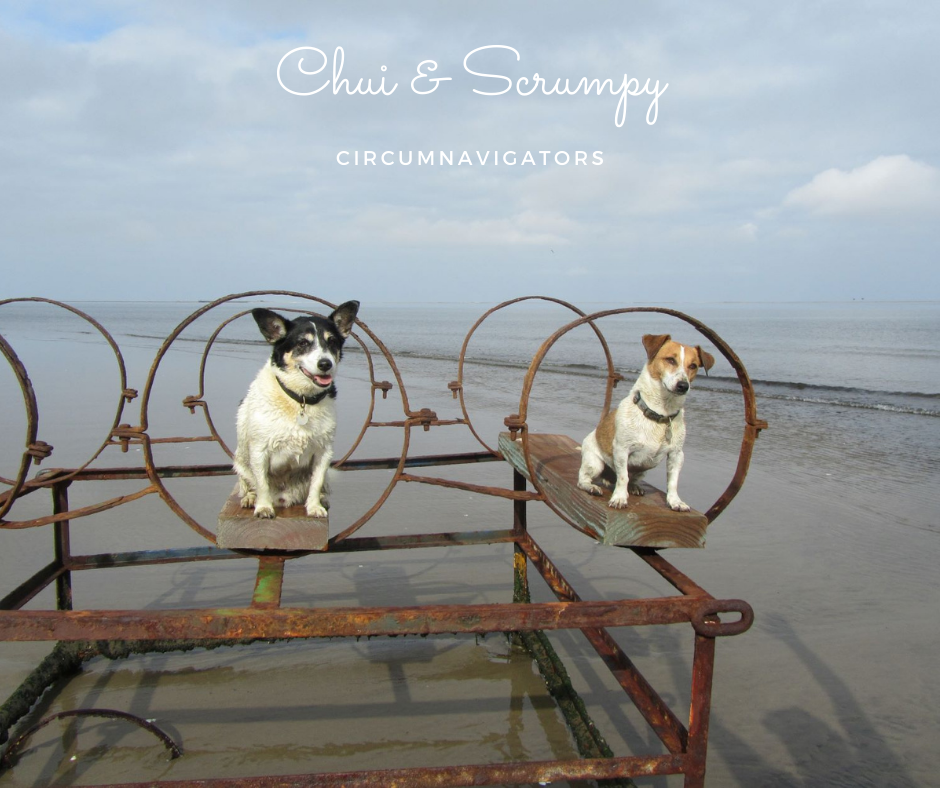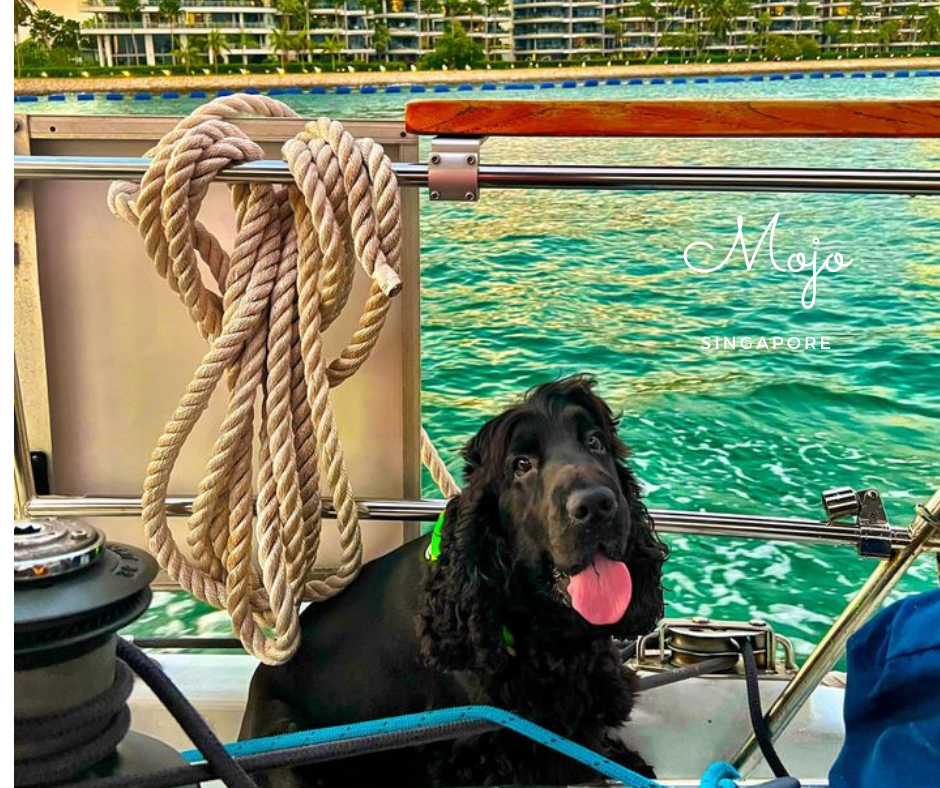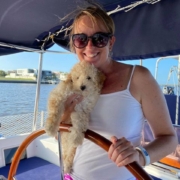Welcome New Members
Piggeldy, The Netherlands
What a stunning breed. Piggeldy is a Podenco mix who sails in the The Netherlands with doting mother Sandra. Together they look forward to sailing next season on Lake Constance.
Welcome aboard Dogs Who Sail.
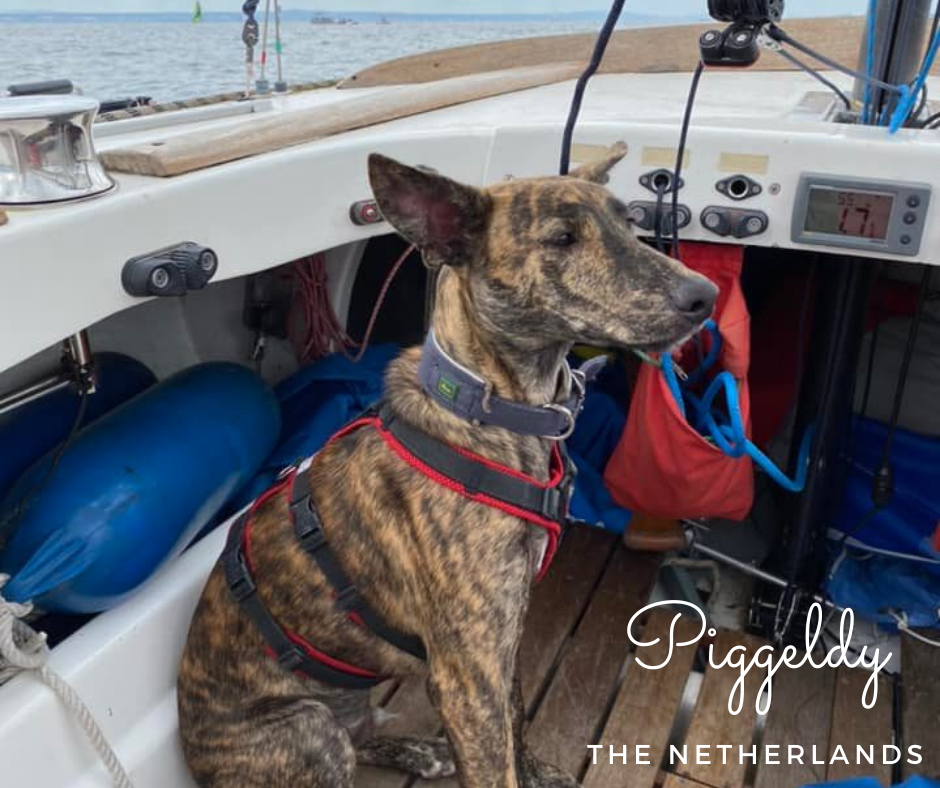
I had never heard of this type of dog before and so I did some research and found that the Podenco are notoriously abused working dogs in Spain.
One of the oldest breeds in the world, the Podenco is related to the ancient Pharaoh Hounds of Egypt. These days they are bred as hunting dogs, reported to be chained up in horrible conditions when they are not working. To top things off they are not protected under Spanish law.
To learn more about this fascinating breed please visit Hope for Podencos, a registered charity who do their best to rescue this forgotten breed and find them caring families.
Benji & Daisy, Greece
Jill told Dogs Who Sail members, “They are so fond of each other, so we had to take both of them.
 “
“
The couple are aware of the challenges they face adopting strays and also introducing the dogs to boat life. The initial focus has been on gaining the dogs trust and gradually building a bond between one another. Being responsible guardians, Jill booked Benji & Daisy in to be desexed.
As boating dog parents, we have all asked (or ruminated) about one or both of the questions Jill presented to the group. I have added links to each question to interviews I conducted with sailing vet, Sheridan from Vet Tails Sailing Chuffed and Ken Innes, head trainer from Assistance Dogs Australia. All of the interviews go for about 30 minutes and are packed with professional, practical advice. Not every dog is the same and unfortunately there is no magic solution but we can do our best to learn from others.
Question 1
Peeing and pooing while out sailing. How did you go about teaching your dogs to do that onboard?
https://www.youtube.com/watch?v=UM0xw7AYgX4&t=13s
https://www.youtube.com/watch?v=-zVVBSpvTy8&t=8s
Question 2
Motion sickness. Daisy has been puking in the car a few times and we are of course worried about her being sea sick when it’s time for us to sail away from here.
https://www.youtube.com/watch?v=gdhGvCX7TfE
One of the things I love most about our Dogs Who Sail community is the support that everyone gives each other. Where I can, I will add to that by brining in professional and personal experiences so we can enhance opportunities for our dogs to be happy, safe and comfortable onboard.
Dogs Who Sail Little Champion

Harley is a 14 year old Maltese Terrier and an adventurer of both land and sea. I have had the pleasure of spending time with Harley as we share the same marina and circle of friends here in Australia. This little dog has the softest, most pure nature you can imagine. Every single time I see her out walking, my heart melts for her Maltese ears that bounce as she trots along.
For the past six years, Harley has been living aboard with her humans Tanya and Danny, travelling the East Coast of Australia during cruising season. This year she had a new adventure, a road trip across Australia covering a whopping 14,800kms – (9,200 miles) over eight months.
Harley is a brave little warrior. When she was nine years old she was diagnosed with Cushing’s Disease, also known as hypercortisolism and hyperadrenocorticism. If left untreated, this illness can have detrimental outcomes. She has torn both rear ACL’s and in the past two years has developed late onset epilepsy. Despite all of this, Harley is always in good spirits and her humans go to great lengths to ensure she lives a life of luxury and has the best medical care wherever they travel.
During their recent expedition across Australia, something got stuck in Harley’s paw on a walk around Uluru. You can see in the photo below the poor little paw became inflamed with infection. Tanya and Danny jumped in the campervan and headed to Alice Springs to find a vet – only a short 460km away (285 miles).

Four days later little Harley collapsed in the harsh outback Australian heat of Camooweal while her little body was still recovering with the infection. Even though Tanya and Danny still had places they would have liked to have visited, they chose to return home to the East Coast where conditions were cooler for Harley.
There is so much I love about this Dogs Who Sail family. While Tanya and Danny live their dreams, it is never at Harley’s expense. If their little girl is not comfortable, they will unquestionably change their plans to ensure her wellbeing.
As Tanya says, “For all who are worried about cruising with your beloved fur baby in their senior years, just remember perseverance, understanding your dogs limitations and most of all loving them is all they and you will need to have a wonderful cruising life full of special moments and memories.”
Together We Walk In a New Way
These past few weeks we have bid farewell to some very special members of Dogs Who Sail who have crossed the Rainbow Bridge. I honesty feel that this is one of the toughest challenges we have to face in our lives.
It has been an absolute honor to witness a united Dogs Who Sail Facebook community being so incredibly supportive when there is a loss of one of our salty sea dogs. The love and compassion they share with each other melts away any differences in worldviews. All that matters is the understanding of the greatness of loss and the accompanying heartache.
No one truly knows what happens when life as we know it ends. The one thing we can be sure of is the love that we shared with our dogs, and the feelings that love evoked within us will never go away. It is this energy that remains in our hearts, our minds and our bodies and it is immortal.
As we take the time to remember another’s loss, may we be reminded of how precious the time is that we have with our furry best friends.
RIP Stella, United States
This gorgeous smiling girl was a fulltime liveaboard with her human Karen and three other dogs. Well to be exact, two other dogs and a cat who thinks she is a dog.
Thank you Karen for giving Stella many adventures which would have enriched her life.
Blessings dear one.
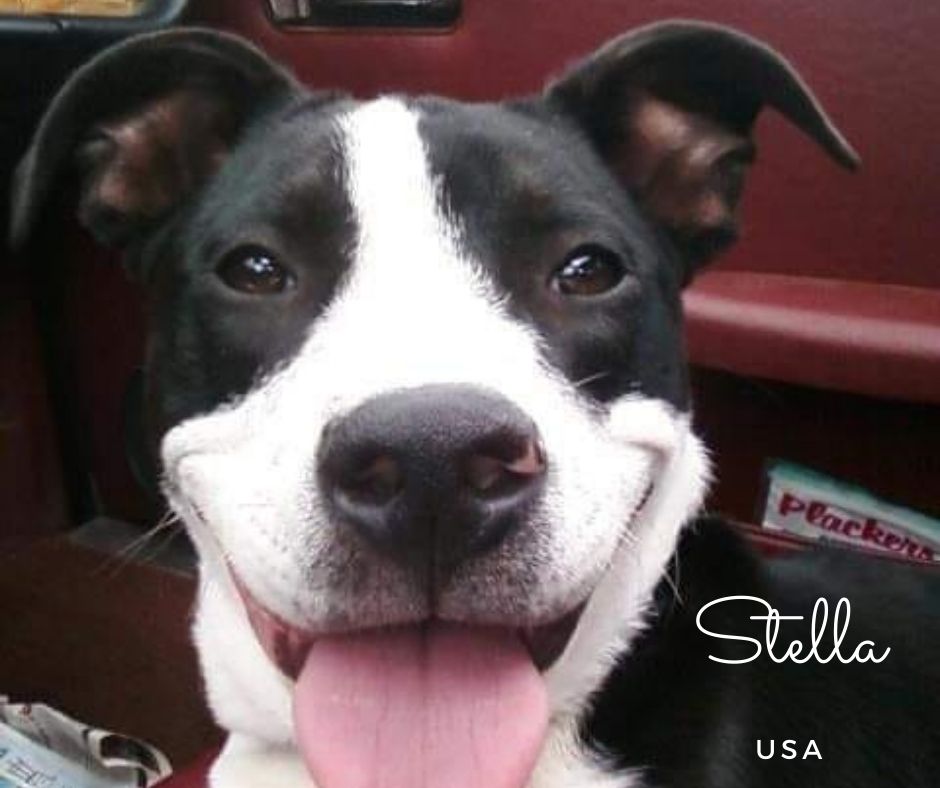
RIP Temba, Australia
Temba also known as Flubbie to her human Nicky, has been sailing the beautiful east coast waters of Australia. Having the best of both worlds, Temba spent time on land and water. One of her favorite destinations was Great Keppel Island, a stunning tropical island where dogs who sail are welcome.
Darling Temba, thank you for sharing the past five years of your boating adventures with us. Run free Beauty. xx
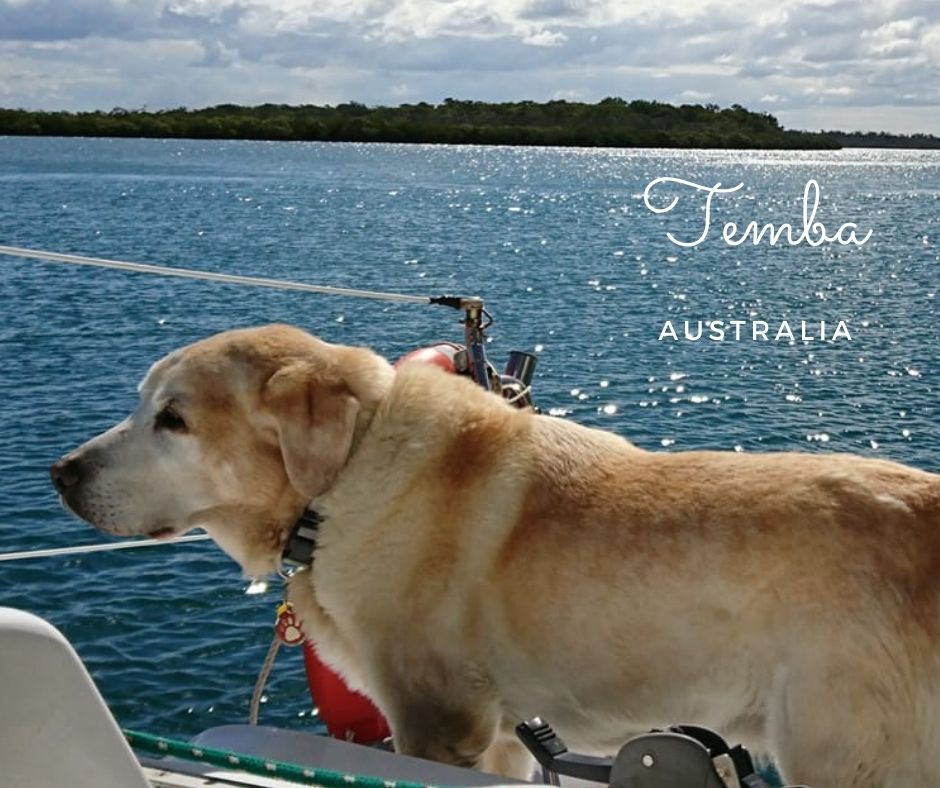
Dogs Who Sail TV – Episode 5
DOG OVERBOARD
We’ve heard about it happening to others but never think it will happen to us. In this interview I chat with Dogs Who Sail member Esther Woodward about the day her black labrador Shelby fell overboard and they didn’t see it happen.
Thank you Esther for spending time with me. You have shared some valuable information that will keep other dogs safe on their boat.
Thank you for being here and making this community so very special.
Until next time, fair winds and love.
Tanya xxoo
